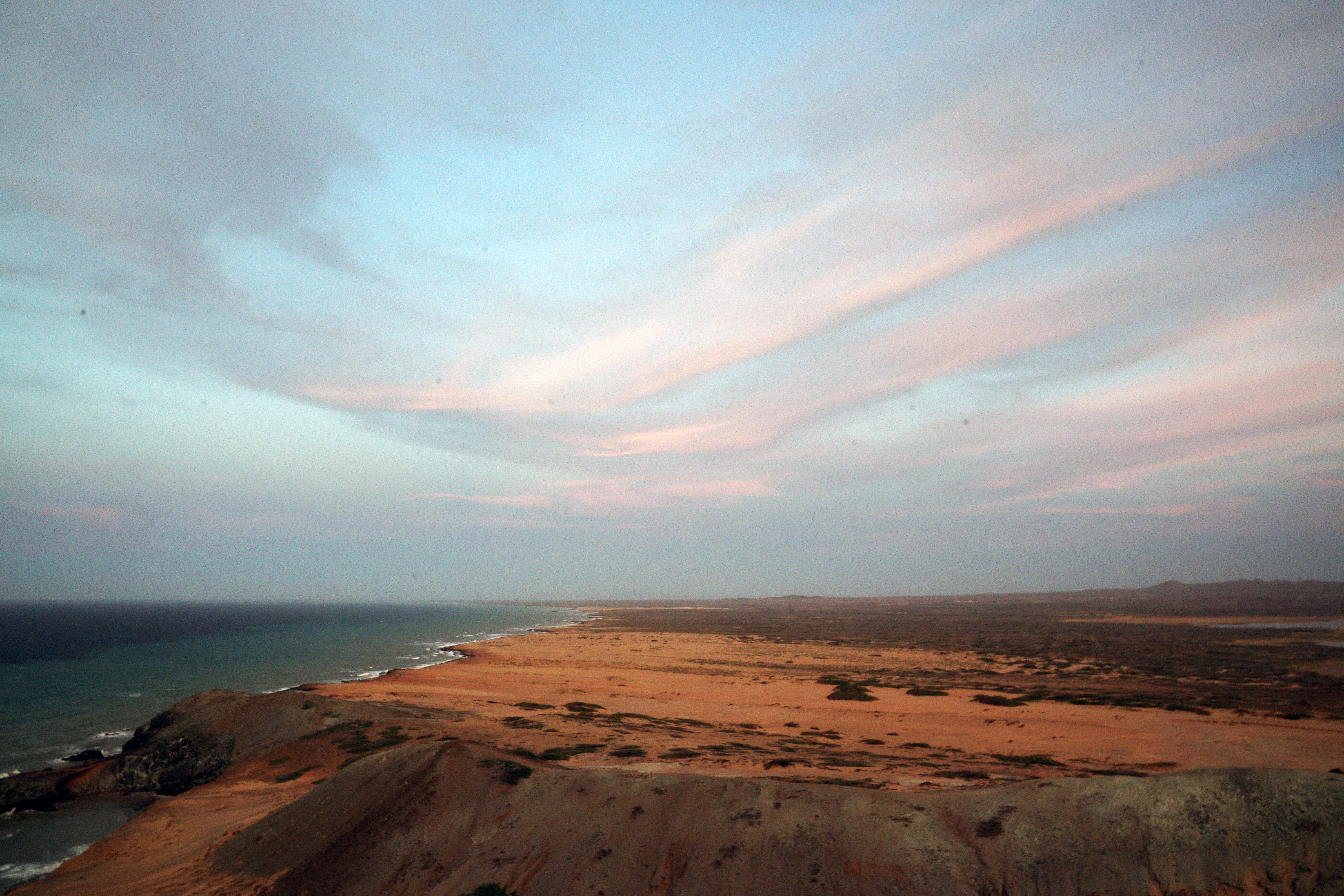MASTER OF CRAFT
A WOVEN EXPRESSION OF LIFE
CABO DE LA VELA, COLOMBIA
Scroll to explore
The Story
IN CONVERSATION WITH MARÍA CONCEPCIÓN OSPINA
WAYUU WEAVER, CABO DE LA VELA, COLOMBIA
María Concepción Ospina, known locally as Conchita, is a weaving artisan from the Ipuana clan of the Wayuu tribe. Like the majority of women in her community, she learned how to craft high quality chinchorros, hamacas, and mochila, a satchel style bag, in a tradition passed from mothers to daughters. Despite living in isolated, harsh conditions on the La Guajira peninsula, the Wayuu women and their colorful creations are a vibrant expression of their way of life.

To make a
MARÍA CONCEPCIÓN OSPINA , WAYUU WEAVER
mochila, the Wayuu
woman represents her living
experiences with symbols in
nature.
S+O — TELL US WHY CABO DE LA VELA IS THE SACRED PLACE OF THE WAYUU CULTURE.
Ospina — I’m from the Ipuana clan of the Cabo de la Vela area. According to our elders, the Cabo de la Vela is the sacred place of the Wayuu culture. There is a beach near the Cabo called Jepirra. We believe that a Wayuu may die anywhere in the world, but their soul will always return to Jepirra.
S+O — HOW IMPORTANT IS WEAVING TO THE WAYUU CULTURE?
Ospina — Ninety percent of the Wayuu women weave, so we essentially believe that to be a woman is to know how to weave. We learned the craft from our mothers and grandmothers, so did my mother. She was taught by my grandmother and so the tradition continues. It is a practice that goes on through generations. We weave chinchorros which are similar to hamacas [hammocks] and, of course, the mochila.

S+O — WHAT IS A MOCHILA?
Ospina —A mochila is a woven bag that is common amongst the indigenous tribes of Northern Colombia. It is used to carry everyday items that one would need. There are a few sizes depending on what the weaver decides to make. We even produce a large mochila that is the equivalent of a luggage or a travel suitcase.
S+O — HOW DOES THE WAYUU MOCHILA DIFFER FROM THE OTHERS?
Ospina — The Wayuu mochila is most recognizably different from the others, because we use different materials such as cotton and\or synthetic acrylic fiber to weave vibrant colors in our design. Our local symbology, its design, and its iconography consists of the living experiences of the Wayuu people, that's why it is different.

S+O — HOW IS A MOCHILA MADE?
Ospina —Like all weaving patterns, a mochila starts the same way, using the knitting needles and the selected fiber. But what makes the process different is that when a woman starts a mochila, she gets inspired from her surrounding environment and its colors to create the design that best represents her personal experience. This could be the nature in general, or the colors of the dawn or sunset, the color of the Iguaraya fruit [which is red] or a cactus. All of these colors are within our reach in our surroundings, and inspire the designs.
S+O — HOW CAN ONE TELL THAT A MOCHILA IS OF GOOD QUALITY?
Ospina — People are very interested in the mochila designs, and these can now be found in many markets across Colombia, and mochila creations of varying quality are sold around the world. For me, what demonstrates good quality is when the mochila is weaved in one strand and finished with straight edges. The mochila should be able to maintain itself in an upright position without folding on itself.


S+O — WHY IS THIS A TRADITION THAT SHOULD CONTINUE TO THRIVE?
Ospina — Weaving is an expression of our living culture, our day- to-day experiences, and if it ends, then the Wayuu way of life will also end. It would extinguish our tribe, if this tradition ceased to exist.
S+O — WHAT IS YOUR PERSONAL MOTIVATION FOR CHAMPIONING THE AWARENESS OF MOCHILA DESIGNS TO AUDIENCES OUTSIDE OF COLOMBIA?
Ospina —I want to unveil our culture through the weavings. It allows me to show people how we live in this desolate land with so many difficulties but, in spite of the hardships, we manage to survive. This experience is what the mochila craft represents to me, and the reason for my mantra: “I leave a record of history behind. I continue our ancestors’ traditions, and I stamp on it the present and the future”.
I continue
the tradition of our ancestors
and I stamp on it the present
and the future.

Credits
Photography by Victor Raison
Film by Nelson David Gutierrez
Special Acknowledgments - Alta Guajira Tours
The Objects
Exclusive Edition 014 Wayuu Mochila Bag
The Wayuu mochila is woven to communicate the inspiration that the weaver finds in her daily life and surroundings on the La Guajira peninsula. The bold use of color and use of cotton materials separate the Wayuu mochila from those made by the other Indigenous groups of Northern Colombia who use animal wool and natural plants to fabricate their bags. The Wayuu interpretation of the mochila has garnered a reputation as a chic, stylish carry-all for holiday getaways or year-round depending on the chosen color scheme.
The Destination
CABO DE LA VELA, COLOMBIA
Cabo de la Vela can be found on the La Guajira peninsula of Northern Colombia where the unforgiving desert meets the sea in an unforgettably beautiful setting. These ancestral and sacred lands of the Wayuu have recently been discovered as a world-class, kitesurfing destination, making it more and more possible to find transportation and no-frills accommodation on the cape. Due to the remote, off-road location and passage into tribal lands, it is best to travel the region with a trusted tour guide such as Alta Guajira Tours



